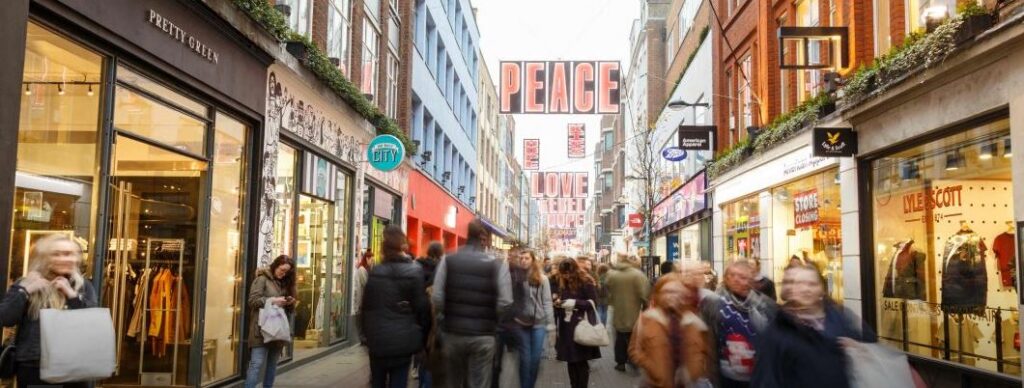Retail brands and their value offerings in the UK high street: What’s more important in generating loyalty amongst their customer base? (2006)
Retail Brands And Value Offerings Dissertation – The following report is an in-depth study and analysis assessing the loyalty demonstrated by 200 shoppers on UK high streets towards their most frequented clothes retailer. I decided to use most frequented retailer to uncover what made shoppers keep coming back to a particular store. The research was based around a conceptual model put forward in Grewal, Levy and Lehmann’s article ‘Retail Branding and Customer Loyalty: an overview’.
Their model was based around the fact that store image and perceived value shape the loyalty of shoppers and what acts of loyalty they perform. Therefore my research was undertaken to reveal the effect that both the brand image of the store and the perceived value play in shaping customer loyalty and in turn customer equity. The research was undertaken on Oxford Street, London, where 200 respondents were interviewed using a mall intercept technique and asked to give their views to the brand and value questions posed to them and how they rated their overall loyalty.
After analysing the data some interesting results were thrown up as there was weak correlation between the value and brand variables measured and loyalty. This may have be for 2 reasons; firstly the hedonistic motivations of the shoppers and secondly because shoppers may have a portfolio of stores where they buy from. However, when loyalty intentions were present, it was product quality and consequently value, that had the strongest correlation and the respondents were also more likely to speak positively about the retailer than any other form of loyalty, as this regression model had the best fit. Brands did play a part but only if the brand was perceived as weak and was there any chance of increasing loyalty through increasing brand strength.
Recommendations were made to focus on the aesthetic side of quality for retailers citing the difference in fortunes between retailers M&S and New Look. I further used Keller’s model of building brand equity to help retailers with a weak brand equity and I used the strategic roles of the “servciescape” as a means of attracting customers into stores if no loyalty was present and increasing the experiential value in the hope they’ll shop their again.
- 22,000 words – 100 pages in length
- Excellent use of literature and models
- Good In-depth analysis
- Well written throughout
- Includes questionnaire
- Ideal for marketing students
1: Abstract
2: Introduction
3: Review of Literature
Importance of Brand Equity
Importance of Value Equity
Importance of Retention Equity
Impact of Services
Impact of retail brand equity and perceived value
Impact of Brands to retailers
Impact of retailers perceived value
Shift from Brands to Value
4: Hypothesis
5: Methodology
Primary Research
Mall-Intercept Technique
Operational Procedure
Sampling
The questionnaire
Pre-Test
6: Data Analysis Techniques
7: Display of Results
Satisfaction
Word of mouth recommendations
Word Of mouth speaking positively
Intentions:
Willingness to pay a price premium
8: Findings and Implications
Quality recommendations and implications for retailers
Brand recommendations and implications for retailers
Loyalty Recommendations and implications for retailers
9: Conclusion
Bibliography
Appendix Section
Questionnaire

